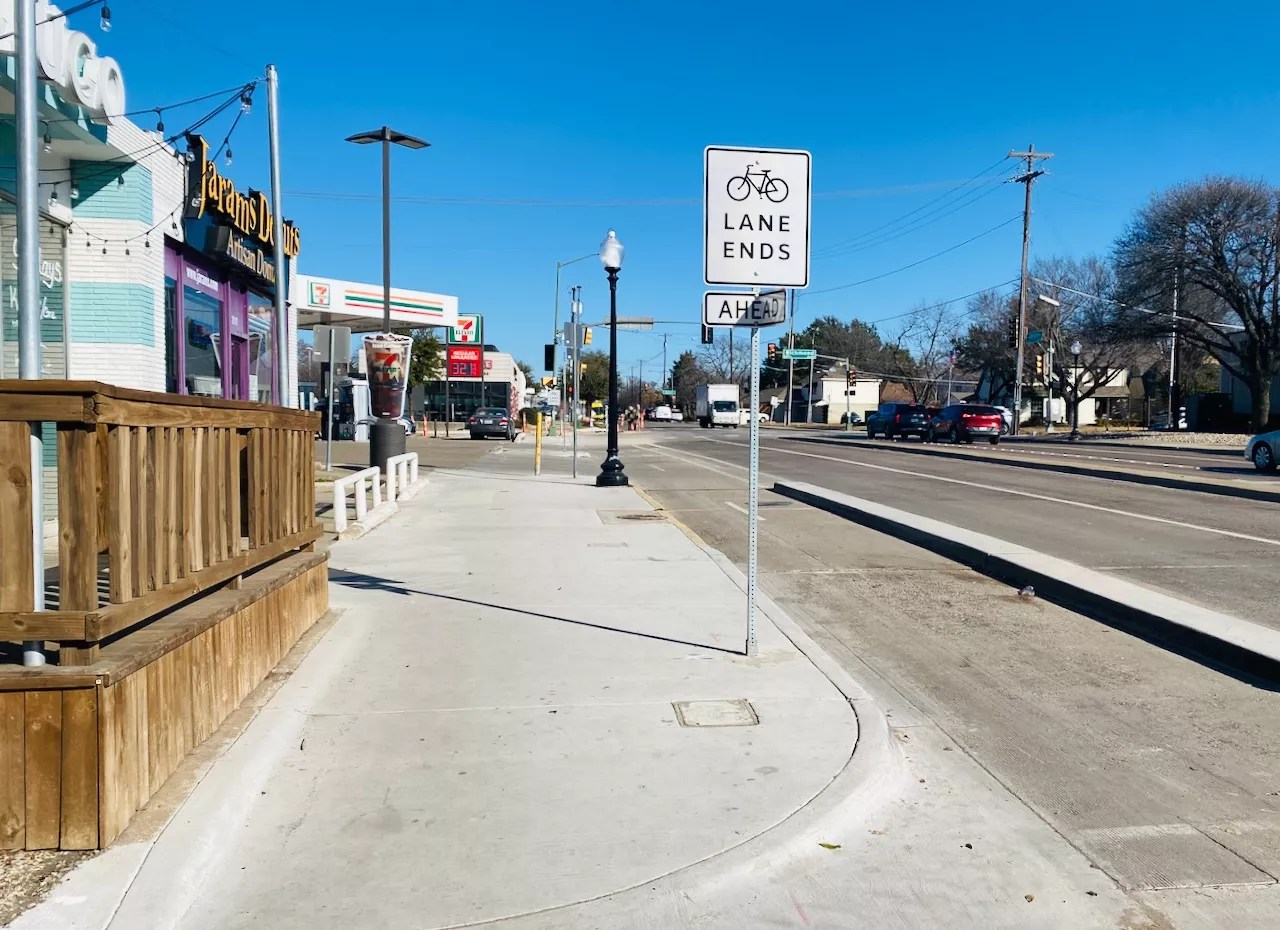
Lauren Drewes Daniels

Audio By Carbonatix
Editor’s Note, 01/29/2025, 11:02 a.m.: This article has been updated with new information on the partnership between Texas A&M University and the Texas Department of Transportation.
Katie Kerl was walking to her Uber on a Thursday night in January when another car raced around the parked rideshare vehicle and struck her and her friend. According to reports, the 23-year-old recent graduate died on impact and her friend was hospitalized. Kerl’s death reveals a safety crisis in Dallas – poor pedestrian conditions resulting in a high rate of fatal crashes.
Despite thousands of miles of sidewalk and city and state initiatives to protect pedestrians, Dallas still reports pedestrian fatality rates significantly higher than comparatively sized cities, according to a report from SafeStep.pro. There were 73 fatal pedestrian crashes in Dallas in 2024 and 151 severe injuries. It is a high but perhaps unsurprising figure for a city with a walk score of 46. Walk scores are determined by the online realty service Redfin. A team of urban planners determines the walkability of an area based on the availability of walking routes to nearby amenities. A score between 25 and 49 means most errands within that area will require a car. There is no major city in Texas that has a score over 49
As of 2021, there were 4,536 miles of sidewalk in Dallas, but a large percentage of them were damaged and many of the existing sidewalks do not connect. There are even fewer routes that connect neighborhoods across high-speed, multi-lane highways. Pedestrians are geographically restricted by infrastructure or forced to play a high-risk game of chicken.
“It’s about time beyond time to make our infrastructure safe for pedestrians, cyclists, and other forms of micro-mobility, not just cars. And connecting sidewalks is a huge piece of that,” said City Council Member Chad West in an interview with KERA in 2021.
Walkability is crucial in cities with high populations, but walkable accessibility to resources in large Texas cities isn’t common. San Antonio and Austin are both categorized as car-dependent cities by Walk Score. But, Dallas, scoring better walkability scores than those cities, has significantly higher pedestrian fatality rates. There were 371 pedestrian-involved crashes in Austin in 2023, and 577 in San Antonio. There were 831 in Dallas.
The issue doesn’t end with major cities, however. Pedestrians accounted for 20% of all roadway fatalities on Texas roads, according to Neal Johnson, a research scientist at the Texas A&M Transportation Institute. Johnson is also a spokesperson for Walk Bike Safe Texas, a collaboration between Texas A&M and the Texas Department of Transportation. He said pedestrian fatalities have increased 69% in the last decade. The changing shape and design of vehicles over the last 10 years has decreased the survivability of crashes, he said.
“More SUVs, more larger trucks, and also the design of them and how the impact and the size of them is creating a physics problem where it’s hurting more, killing more pedestrians than it used to,” said Johnson.
Pedestrian fatalities are most common at night when visibility is low. Johnson added that a lot of fatalities occur when pedestrians cross major roadways, overestimating how prepared fast-moving vehicles are to stop. Poorly designed roads, improper signage and cognitive and physical distractions also lead to pedestrian-related incidents.
Johnson noted that most crashes are preventable, at least to some degree. But prevention lies in the hands of all roadway users, whether they are traveling by car or by foot.
“Just one decision on the part of one of those road users, whether that be the person walking or the person driving, probably could have made that different,” he said. “Different design of the roadway or different infrastructure in place, et cetera, all those things, any of those factors could have helped prevent [a] crash.”
Dallas, recognizing the problem it is facing, launched Vision Zero Dallas, an initiative that promotes public safety and aims to cut traffic-related deaths in half by 2030. Though only 2% of Dallasites walk to work, pedestrians account for 30% of traffic deaths. The program prioritizes spreading pedestrian safety education and improving and expanding the existing sidewalk system, although recent numbers indicate traffic-related deaths in Dallas have remained consistent in recent years without falling much.
“Increasing the safety of our streets will be critical to enticing more people to walk and bicycle for transportation and recreation,” reads the Vision Zero Dallas Action Plan.
Handling the pedestrian fatality crisis is a heavy lift that requires effort from all parties. Pedestrians should be aware of their surroundings, and cities are charged with supplying their walkers with accessible, expansive and well-maintained sidewalk systems.
“There is not one silver bullet out there that I think is going to solve it all,” Johnson said. “I think it needs to be an all hands on deck approach. I think cities do have a responsibility to understand where there are problem areas and understand what they can do to address those.”